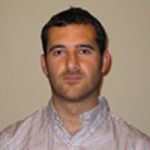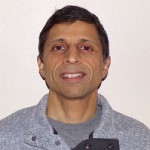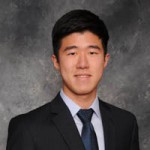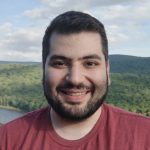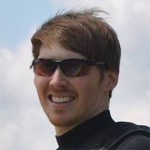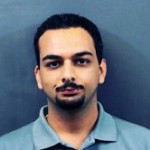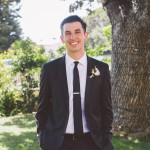Dan van der Weide
Credentials: Professor
Email:
danvdw
Phone: (608) 265-6561
Daniel van der Weide is a pioneer in terahertz generation and detection using integrated circuits, having designed, fabricated and measured the shortest pulses on record using these circuits in 1994, with comparable results at world-record slew rates reported in 2018. Through these and related efforts, Professor van der Weide has made extraordinary contributions to the understanding of terahertz electronics, including coherent measurements, ultrabroadband antennas, and remote sensing. With his post-doctoral collaborator Fritz Keilmann, he generalized the short-pulse methods he developed, applying them to femtosecond lasers to produce broad infrared combs, whose development has had worldwide impact. Working with Robert Blick, he applied coherent electronic techniques to spectroscopy of low-dimensional electronic systems. In this context, he also sought to localize terahertz radiation to sub-micrometer dimensions using micromachined scanning probes as near-field antennas, with significant ramifications into microwave microscopy.
This ability to localize high-frequency energy led him to explore its use in a wide range of applications, including the first non-contact measurements of pore-forming protein dynamics in membranes (also with Blick) and determination of DNA hybridization through microwave impedance spectroscopy with Bob Hamers. With this biomedical orientation in his research, he collaborated broadly with both researchers and clinicians, and supervised several Ph.D. theses in the application of microwave technology to measuring biomolecular signals, such as protein conformational changes.
These small-signal measurements gave way to exploration of localized microwave power to treat cancer. Challenged by Dr. Fred T. Lee Jr. to develop a superior treatment modality to radio-frequency ablation, Dan invented a triaxial antenna that could be impedance-matched to diseased tissue in order to efficiently deliver ablative power in a 17-gauge format that enabled percutaneous application under image guidance. With their advisees Christopher Brace and Paul Laeseke, Dan and Fred pursued the clinical refinement of this application of 2.45 GHz microwave power, ultimately establishing Neuwave Medical Inc., which has treated thousands of patients with kidney, lung and liver lesions, and was acquired by Johnson & Johnson in 2016.
Marcos Martinez
Credentials: Research Associate
Address:
Marcos Martinez was born in Puebla del Salvador, Cuenca, Spain, in 1982. He received the Eng. Dipl. degree in electrical engineering from the Universidad Politecnica de Valencia (UPV) in 2011, and the M.S. and PhD. Degrees in electrical engineering from the University of Wisconsin-Madison in 2016 under the supervision of Professor Daniel van der Weide.
Marcos also has 4 years of industry experience designing RF circuits and antennas for Radar, Electronic Warfare and Communications systems, working for Indra Sistemas S.A. in Torrejon de Ardoz (Spain).
His research interest is in the field of chipless RFID, investigating advanced applications in identification and sensing.
Atul Bhadkamkar
Credentials: PhD Student
Atul S. Bhadkamkar received the B.Tech degree in Chemical Engineering from the Indian Institute of Technology, Bombay in 1990, and the M.S. and PhD. degrees in Chemical Engineering from University of Utah in 1992 and 1995. He received his M.S. degree in Electrical Engineering from the University of Colorado in 2001.
His research interest is in generation of coherent near and mid-infrared light. He has worked with solid-state lasers and is working on controlling a dual femtosecond setup. He is investigating the use of microresonators for four wave mixing and a low-noise, wide bandwidth, coherent, rugged, compact infrared source. The infrared source is translated to mid- infrared using difference frequency mixing and use of optical parametric oscillation.
Atul has over twenty years of industrial experience in power electronics, electronics and embedded controls, having worked for Eaton Corp., PELCO, Softswitching Technologies, Powerstream Technologies in the past and currently at ABB. He has coauthored publications in all these areas.
Matt Fayyad
Credentials: MS Student
Matt Fayyad received his B.S. in Electrical Engineering and Neurobiology from the University of Wisconsin – Madison in 2020. He has industry experience in PCB design, simulation, assembly, and test for analog, RF, and low/high speed digital systems, with adjacent experiences in data analysis, signal processing, and lab automation. Matt is primarily interested in bioelectromagnetics, and has contributed to research studies in neuronal electrophysiology, microwave-induced neural injury, and microwave tissue characterization. His broader interests include medical devices, telecommunications, consumer electronics, and fundamental scientific research.
Matt Dwyer
Credentials: Past Member (PhD, Postdoc)
Email:
mmdwyer2
Matt Dwyer received his B.Eng. degree in Electrical Engineering (Honours I) from the University of Queensland, Australia in 2009, including exchange studies at the Technical University of Denmark and the University of Wisconsin-Madison. He received his M.S. and Ph.D. degrees in Electrical and Computer Engineering from the University of Wisconsin-Madison in 2011 and 2017.
His research interests lie in the design, simulation, and fabrication of nonlinear transmission line (NLTL) monolithic microwave integrated circuits (MMICs). He has designed faster and higher voltage gallium arsenide (GaAs) Schottky diode varactors to enable the generation of sub-picosecond voltage waveforms. He has also developed cleanroom fabrication processes to enable MMICs with reduced parasitics and losses. This cleanroom experience has also led to the development of many tools to support manual wafer and piece processing.
Mohammadreza Ranjbar Naeini
Credentials: Past Member (PhD)
Mohammadreza Ranjbar Naeini received his B.Sc. from the Isfahan University of Technology in 2014 and his M.Sc. from the Sharif University of Technology in 2016, both in Electrical Engineering. His MSc. thesis was on designing and fabricating frequency scanning antennas at Ka-band. In September 2017, he began his Ph.D. studies at UW-Madison, and is working on field measurement structures and mm-wave antenna design and fabrication.

